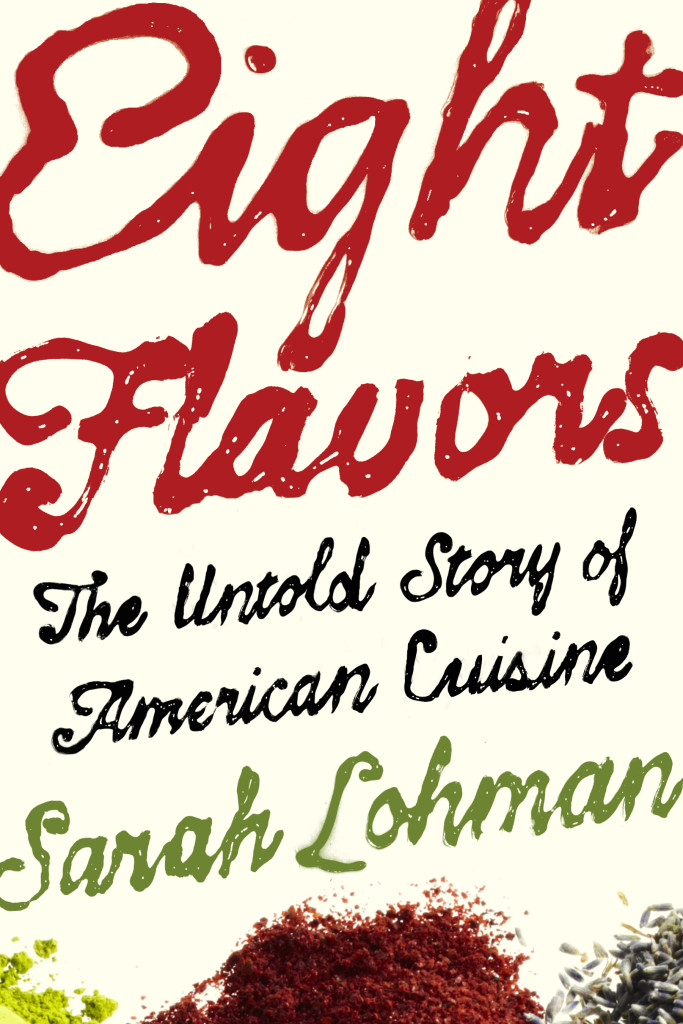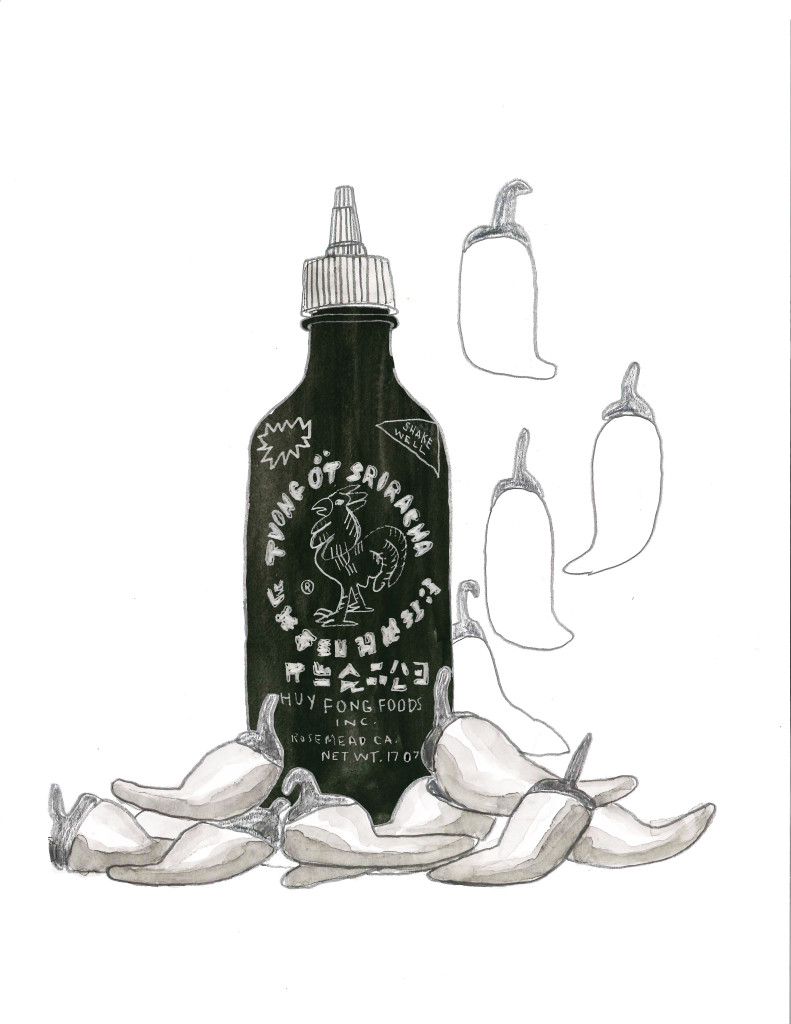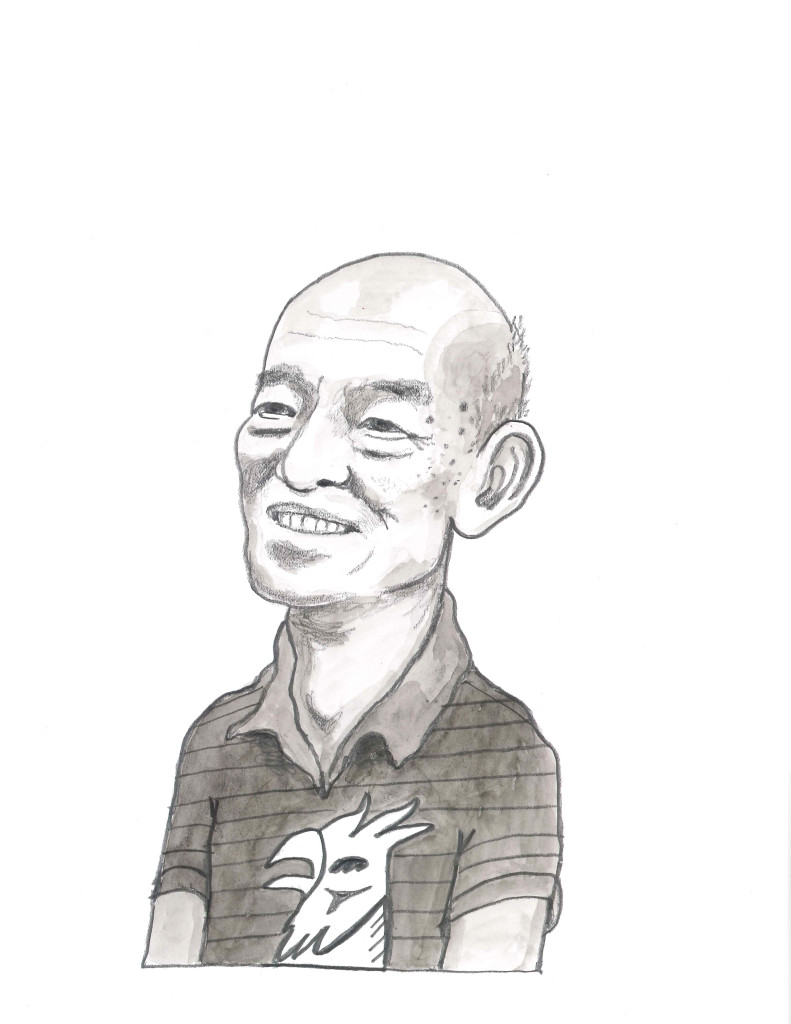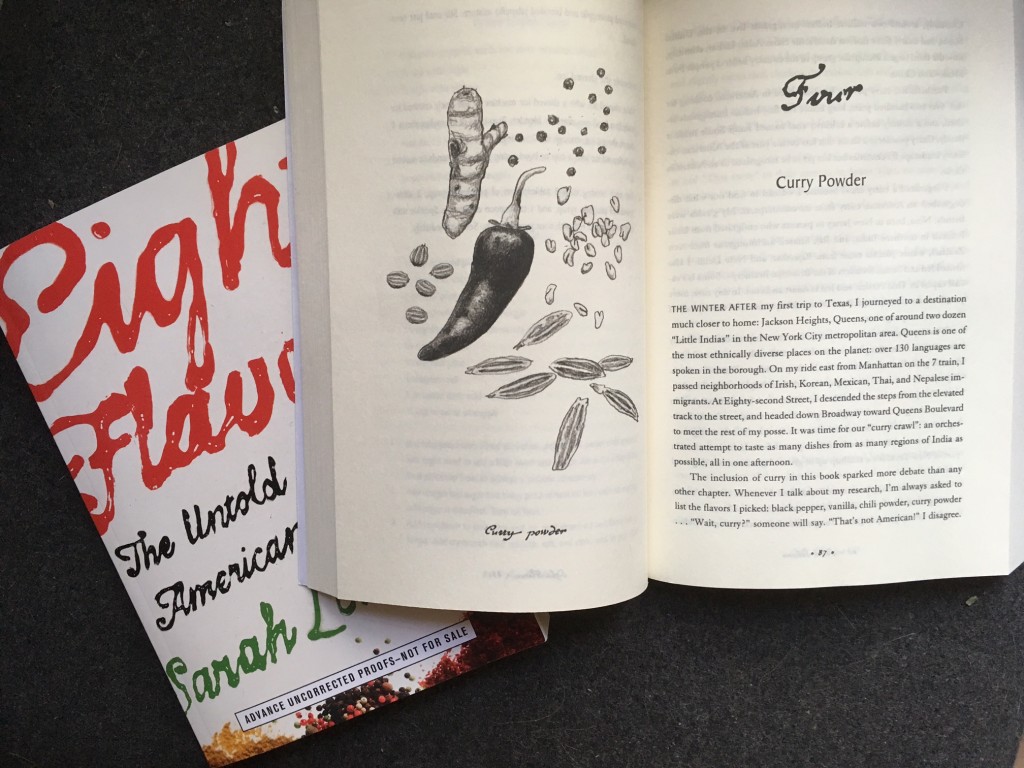 AÂ chicken curry from the 1850s.
AÂ chicken curry from the 1850s.
To create my first book, Eight Flavors: The Untold Story of American Cuisine, I researched the eight most popular flavors in American cooking: black pepper, vanilla, chili powder, curry powder, soy sauce, garlic, MSG, and Sriracha. When I dived deep into each of these eight topics, I often found fascinating new information and recipes–some of which didn’t make it into the book. So over the next few months, I’ll be publishing this exclusive content on my blog! If it whets your appetite to read the whole book, make sure to get your own copy here.
One week after the 2016 presidential election, I attended a citizenship ceremony hosted by the Lower East Side Tenement Museum. Fifteen individuals, their birthplaces as wide ranging as Japan and Iraq, became Americans that day.
The most touching part of the ceremony was a speech delivered by Samantha Power, United States Ambassador to the United Nations, an immigrant herself from Ireland. During her speech, Power choked up while recounting the immigration stories of the families of her closest colleagues. “This is impossible,” she declared at one point, trying to get through the moving stories. She then went on to address the new citizens directly:
You are what America looks like…We are a nation of immigrants, but for as long as this nation has existed, Americans have been harkening back to a golden era, before families like yours or mine got here. It never seems to matter to those people that their parents or grandparents were on the receiving end of similar discrimination when they first arrived in this country. But even if we know deep down that such intolerance is as old as the nation itself, it doesn’t make it hurt any less when we experience it.
You may hear some people say that in order to become “real” Americans, you need to forget where you came from, or leave behind the history that brought you to this moment. Cover up your accent, change the way you dress…Please don’t list to those voices. Joining a new nation does not mean you have to leave behind the one you came from, or what it taught you.
You can watch Power’s speech in its entirety here.
I had attended this citizenship ceremony in the past, in 2013, to see my dear friend and colleague Raj become an American. Raj is an immigrant from New Zealand; his parents are from India. I talk about Raj in the Curry Powder chapter of my book; we went on a “curry crawl” together in Jackson Heights, Queens. In that chapter, I also focus on the stories of Indian immigrants in the early 20th century who were not allowed to receive their citizenship because of the color of their skin.
Often, when I list the flavors I’ve included in my book, I get a lot of push-back about curry powder. Many people don’t consider it an American ingredient. But Indian immigrants have been coming to America for more than 100 years; and we have been cooking with curry powder in this country for over 200 hundred. In fact, a dish called Country Captain Chicken, a traditional dish of the American South, arrived in this country in the 19th century through our Anglo-immigrant roots.
The History
The origin of Country Captain Chickens begins late in the 16th century, when the East India Company was granted a royal charter by Queen Elizabeth. The charter gave the East India Company a monopoly within Britain on trade with the Far East; the company would focus on India.
As the East Indian Company rapidly expanded in the 19th century, more and more employees moved to the “Country,” as India was known. They were posted to a new station in another part of India every three years, which exposed them to culinary traditions all over the subcontinent. When these British workers traveled around the subcontinent, they were carried in a litter by a team of men, the carriers traded out at roadside taverns like horses. The litter itself was misery, being shaped like a wooden coffin in which the traveler slowly baked in the Indian sun. When they stopped for food at a roadside eatery, called a “bungalow,†they were often served chicken. Beef and pork were not served in much of India because of Hindu and Muslim religious restrictions. And beyond that, chicken, no matter what the continent, was the convenience food of the 19th century. If you had sudden dinner guests, you could step out your back door and scoop up one of the chickens pecking around in the yard. A few hours of plucking and butchering later, you had a chicken dinner. It doesn’t sound convenient–but most other meat was seasonal. A chicken was available anytime.
Because British officials didn’t have the same cultural history and connection to each region as a native Indian, when eating at home, they would take the foods they loved willy-nilly from all regions and serve them together. A bowl of Anglo curry could be accompanied by garnishes from everywhere: Persian hard-boiled eggs, Punjabi pickled lemon, Madras-style sliced raw onions, fried papadum bread, as well as British-style crispy bacon. The transient English officials created a trans-continental cuisine, which became the food they imported when they returned to England.Â
And that cuisine eventually traveled to America. Country Captain Chicken, a dish inspired by the bungalow dinners of the British, first showed up in America in Eliza Leslie’s 1857 cookbook Miss Leslie’s New Cookery Book. Although Leslie was born in Philadelphia, she lived in England from the ages of 5-11. It’s likely that as a girl she was exposed to the Anglo curries being served in British households, and transported her love of spicy, fried Country Captain Chicken back to the States.
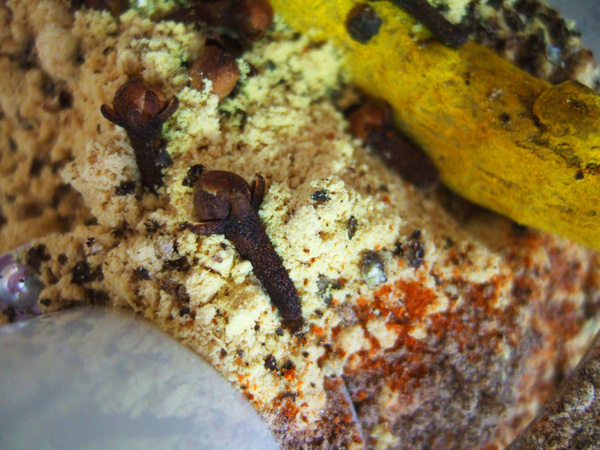 Curry powder ingredients according to a 19th century American recipe.
Curry powder ingredients according to a 19th century American recipe.
The Recipe
Leslie’s recipe asks the home cook to rub chicken parts in curry powder before frying them up crisp in butter and onions. The chicken is lifted out of the butter with a slotted spoon, and set aside to drain. A sauce is made from the butter and onions, with the addition of a few spoonfuls of coconut. It’s all served over rice, and the crispy chicken skin makes a lovely textural contrast to the sauce.
Country Captain Chicken
Recipe adapted by Jill Paradiso from Miss Leslie’s New Cookery Book, 1857.
Yield: serves 4
For the curry powder:
1 teaspoon powdered turmeric
1 teaspoon powdered coriander
1 teaspoon powdered cumin
1 teaspoon powdered ginger
1 teaspoon powdered nutmeg
1 teaspoon powdered mace
1 teaspoon powdered cayenne pepper
For the chicken:
Salt
1 whole chicken, cut into 8 pieces (2 breasts, 2 thighs, 2 drumsticks, 2 wings)
2 large onions, peeled
1 stick butter
1/2 cup curry powder
1/2 cup unsweetened coconut, shredded
- Make curry powder by combining the spices. Grind fresh from whole
spices for the best flavor.
- Bring a large pot of well-salted water to boil. Once water has reached full
boil, add chicken breasts and onions and cook for 4 minutes. Then add
thighs, drumsticks, and wings, and continue cooking another 6 minutes.
- Remove the chicken from pot and drain well. Leave onion in boiling
water to continue cooking.
- Melt butter in large sauté pan over medium-high heat. Toss chicken in
curry powder until well coated.
- When butter begins to foam, add chicken to pan and cook about 3
to 4 minutes until well browned. Turn chicken pieces over and cook
another 3 to 4 minutes. Turn heat down to low and remove chicken
from pan. Season chicken with salt and set aside.
- Remove onions from water. Slice onions in half lengthwise and then
cut into half-moon strips. Add onions and 1/2 teaspoon of salt to pan
and cook in curry butter mixture over low heat about 8 minutes or until
onions are lightly browned, stirring occasionally.
- Garnish chicken with sautéed onions and coconut. Serve immediately
over any kind of rice you like.
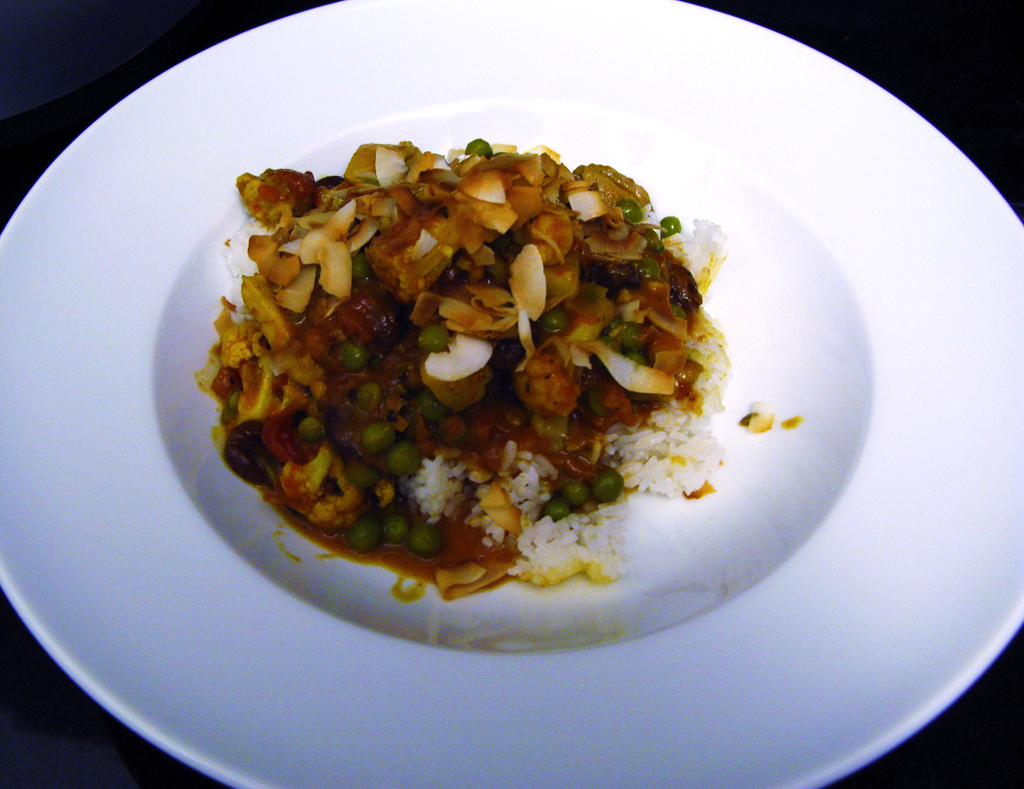
Modern Country Captain Chicken. Photo by Dan Costin.
The Results
By the 1940s, Country Captain Chicken had spread from Philadelphia and appeared in the American South in church-fundraising cookbooks alongside Jello mold with marshmallows. It maintains a crazy level of popularity to this day, with several Southern cities laying claim to its invention. In the contemporary version, the chicken, after being fried, is stewed in the oven in a tomato sauce. And the few spoonfuls of coconut in Leslie’s recipe are replaced by a whole assortment of toppings served table side: slivered almonds, raisins, chutney, orange sections, pineapple and crispy bacon — much liked the varied condiments on the tables of the East India Company in the 18th and early 19th centuries. In the South, these condiments are called “boys,†but according to one Savannah hostess, “Anything more than a five boy curry is considered pretentious north of Gaston Street.†Check out a modern recipe here.
Much of the background on The East India Company came from the fascinating book Curry: A Tale of Cooks and Conquerors by Lizzie Collingham.
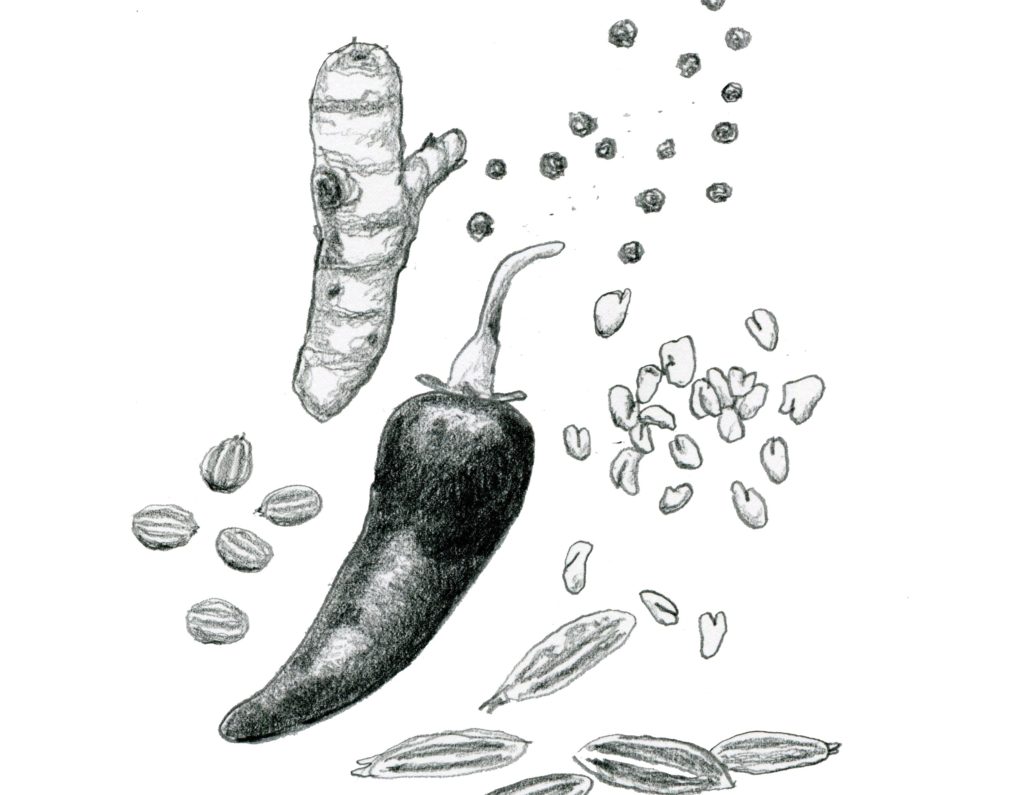 Curry powder illustration by Peter Van Hyning
Curry powder illustration by Peter Van Hyning


